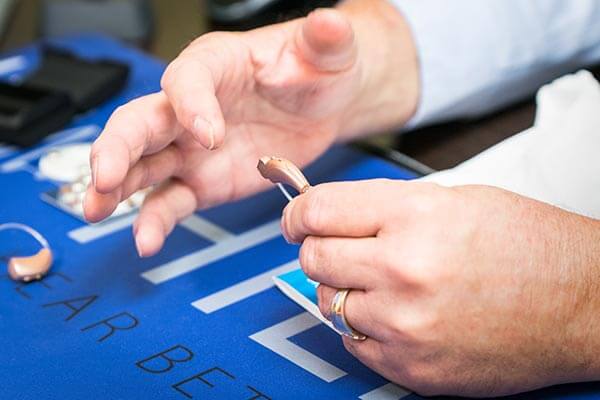By Mike Hill, Au.D.

Over the past 38 years, I have had the pleasure of helping thousands of people improve their hearing through thorough diagnosis and treatment. However, I?ve also worked with patients that are a bit overwhelmed when they come to see us, often because there are just so many hearing aid options available. That?s where we come in. Our professionals are trained to find the perfect hearing aid for our valued patients based on their unique needs.
Some factors that affect the type of hearing aid we fit our patients for include:
- The severity of their hearing loss
- The size and shape of their ear and ear canal
- Personal factors such as lifestyle needs and activity levels
Once we evaluate our patient?s need we then educate them on the many different types of hearing aids available. The four primary options are: behind-the-ear (BTE), in-the-ear (ITE), receiver-in-canal/receiver-in-the-ear (RIC or RITE), completely in-the-canal (CIC), and very small discrete in-the-canal (IIC) hearing aids that are sometimes called ?invisible.? All have the ability to be wireless hearing aids.
- BTE hearing aids are available in mini, standard or power models and are worn either on top of or behind the ear. A case holds all of the parts and a sound tube with a customized tip carries sound to the ear canal.
- ITE hearing aids are worn completely inside the ear canal and are custom-made to fit securely and comfortably in the patient?s ear. Options for ITEs include: full shell, half shell, in the ear and in the canal. All types are made by taking a custom impression and using the exact shape of the patient?s ear canal and all of the components of the hearing aid are housed in one shell.
- RIC/RITE hearing aids are much like BTEs but instead of the receiver being in a housed in a case that sits on top of or behind the ear, the receiver is located in the ear canal and connects to the hearing aid via a thin wire.
- CIC/IIC models are the most invisible and discrete hearing aids because of their positioning and shadowing in the ear and are not often seen by the naked eye. These are the smallest devices and all the components are fit very meticulously within the device.
- Wireless hearing aids, sometimes called Bluetooth hearing aids, connect to devices such as remote controls, external microphones, TV adapters, and even cell phones and are available in several different models, brands, and styles.
If you or someone you know is experiencing hearing loss, please give us a call. We?re happy to help you learn more to best treat your hearing loss and improve your quality of life.
